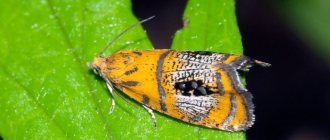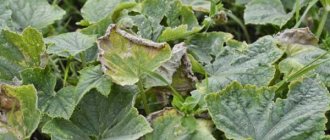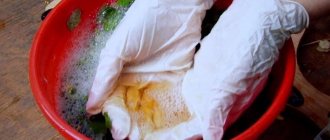Cabbage is a favorite delicacy of caterpillars, which can destroy most of any crop if you do not pay attention to their appearance and do not take any measures. The butterfly lays eggs in the depths of the developing cabbage heads, and small green worms born a week later destroy the plant from the inside in a short time, leaving no opportunity for subsequent development. So how to get rid of caterpillars on cabbage? You will find answers and tips below.
How to deal with caterpillars
You can fight caterpillars in different ways:
- Traditional methods.
- By biological means.
- Preventive measures.
Of course, you can still use chemical solutions, but this can harm both the plant itself and human health, so we will not touch on this topic. Let's return to safe methods proven over the years.
So, how to treat cabbage against caterpillars (folk remedies)? Cabbage cutworm and cabbage cutworm do not tolerate the smell of solutions made from tops, tomato shoots, onion peels, ash and soda.
Worms that attack cabbage roots and how to combat them
It is worth noting that not only the leaves and heads of the crop are attacked by pests. The larval form of the cabbage fly actively eats the roots of the plant, leading to disruption of the development and death of the bushes.
The larvae of this insect have the characteristic appearance of white worms. They can gnaw not only the root system, but also destroy the stems of the vegetable. If single individuals are identified, it is necessary to immediately take measures to treat the culture.
You can treat cabbage from worms with table salt dissolved in water. To prepare the solution, take 0.5 kg of salt per 10 liters of water. The resulting liquid is thoroughly stirred and the beds are sprayed in the morning.
If desired, salt can be replaced with a glass of ash, which is diluted with the same volume of liquid. Only in this case the solution is allowed to brew for several hours.
Caterpillars, aphids and other insect pests can destroy cabbage beds in a matter of days and nullify all the efforts of the gardener. That is why pest control measures must be taken as soon as possible after their detection. You should not immediately buy various chemicals in the nearest stores. Some folk remedies, tested by more than one generation of summer residents, will also provide high efficiency in the fight against insects.
Effective recipes for fighting caterpillars
- Soap solution. You need to take 10 milliliters of liquid soap or tar shampoo and dissolve it in 10 liters of water to which a glass of ash has been added. Spray cabbage leaves generously with this mixture; the smell will repel butterflies and caterpillars.
- Don’t know how to treat cabbage against caterpillars, folk remedies? You can prepare an infusion with onion peels. This product will repel butterflies with its pronounced unpleasant odor. You need to take a liter jar of husks, fill it with two liters of boiling water and leave for two days. After this, you need to add two more liters of clean water and a tablespoon of liquid soap.
- Tomato tops. To prepare tomato tincture, you will need about two kilograms of tops or shoots, which should be poured with 5 liters of boiling water and left to infuse for 4 hours. After this, the mixture must be boiled for 3 hours, strained and diluted with water in a ratio of 1:2. To make the solution “stick” to the cabbage leaves better, it is recommended to add 20–30 grams of household or tar soap shavings (add immediately before spraying).
How to prevent caterpillars
Preventive measures to prevent the proliferation of caterpillars on the site involve the following actions:
We recommend reading
Cabbage leaves in holes: what to do, treatment with folk remedies
- Compliance with the rules of crop rotation - cabbage is returned to its original place after 4 years; they plant it after onions, carrots, cucumbers;
- High-quality preparation of the site for winter - in September, after harvesting, you need to clear the soil of plant residues and weeds, carry out double deep cultivation of the soil using a spade. Between cultivations, irrigate the soil with a 1% solution of copper sulfate for the first time, and add organic matter the second time.
- Soil cultivation in spring is similar to autumn, only at this stage it is better to replace copper sulfate with a biological product. Fitosporin-M is suitable (dilute according to the instructions above).
- Seedlings must be treated with Epin during the growing process, according to the instructions, using it as the first feeding.
- Throughout the entire growing season, after planting on the site, loosen the soil, followed by mulching after each watering and rain.
- Apply fertilizers in a timely manner and carry out preventive treatment with biological products or folk remedies.
Folk remedies
- Unground pepper. Don't know how to get rid of green caterpillars on cabbage? To prepare the tincture, you will need to take 25 grams of black peppercorns, add a couple of glasses of water and boil it. After the solution has cooled, it must be covered with a lid and left for three days in a dark place. Before you start processing, you need to add 5 liters of clean water and 20 grams of laundry soap shavings to the tincture.
- If you don’t know how to get rid of caterpillars on cauliflower, an infusion of valerian, which is sold at the pharmacy, will help. Place a tablespoon of valerian powder in a 10-liter container and add water - the solution is ready! If you treat cabbage leaves in this way several times a season, you can forget about any pests, including caterpillars.
Pest Information
Cabbage beds often become habitat for white cabbage. She lays eggs on cabbage leaves. After a couple of days, a large number of caterpillars emerge from the eggs, destroying the cabbage. The color of the caterpillar is gray-green, with yellow stripes and black dots. The first days, when the caterpillars are still small, they damage only the top layer of leaves. As soon as their size reaches approximately 4 cm, the head of cabbage itself is eaten.
Cabbage caterpillars live on average just under a month. Then they pupate and turn into butterflies. The cycle repeats itself again. If you don’t start fighting the pest, up to five generations of these insects can change over the summer. Therefore, when getting rid of butterflies, you can be sure that the caterpillars will not eat the crop. Cabbage is not only affected by cabbage caterpillars. The turnip, like the white one, has white wings, but is half the size. The caterpillars are green with yellow stripes. The caterpillar eats not only the leaves, but also the head of cabbage itself.
Cabbage cutworm caterpillars are also dangerous for cabbage. Butterflies are small in size, brown-gray in color. Green caterpillars are also small in size. At night, they eat leaves, forming holes in them. During the daytime they sleep inside the stalk. The cabbage moth is small in size, reaching approximately 7 mm. The insect is gray-brown in color with light stripes. Small green caterpillars that appear feed on the sap of the plant and hide on the inside of the leaf.
After 3-4 weeks, the caterpillars pupate, turn into butterflies and become ready to hatch the next generation.
Green caterpillars manage to ruin the entire crop without intervention. The heads of cabbage are formed small or completely wither and rot. It is better to engage in prevention than to waste time and effort on treatment.
other methods
- When do caterpillars eat cabbage and how to get rid of them? If for some reason you do not want or cannot process the plant using the methods listed above, then as an alternative you can use ordinary baking soda and flour in equal parts (you can also add a small amount of pollen from any cruciferous plant). The resulting mixture just needs to be sprinkled on the leaves through a strainer. Caterpillars on such a “diet” die, but no harm is done to the plants.
- The next way to protect cabbage from caterpillars is to plant aromatic plants near it, such as celery, calendula, thyme, marigolds or nasturtium. They all have a very strong smell, so they will scare off the cabbage cutworm and white moth.
Allies in the fight for the harvest
Natural enemies of butterflies and their larvae can provide invaluable assistance in the fight against parasites. Practice shows that using such allies, up to 90% of cabbage pests can be destroyed.
Among these assistants, the most effective are:
- birds - swallows, tits, sparrows are good at catching butterflies, and starlings, rooks, thrushes and cuckoos (the only bird that is not afraid of poisonous caterpillars) willingly eat the larvae. Some gardeners recommend using chickens, but in addition to caterpillars, they will also peck young plants;
- amphibians - primarily frogs and toads;
- reptiles - lizards;
- insects - wasps, praying mantises, ground beetles, grasshoppers, nematode worms, etc. Particular assistance in the fight against cabbage whites is provided by the apanteles parasite, which lays its larvae in the body of the cabbage white caterpillar. The larvae, feeding on the fat and lymph of the caterpillars, immobilize and kill them within 8-12 days. Trichogramma vulgaris (egg eater), which lays its eggs in the eggs of the pest, is effectively used against cutworms and moths.
The diet of toads and frogs includes not only winged insects, but also worms with caterpillars
Ways to combat caterpillars
- Soap-ash solution. In order to prevent the appearance of caterpillars, you should treat the beds with a tincture of ash and soap, and it also works very effectively if the insects have already appeared. To prepare, take a half-liter jar filled with vegetable or stove ash, add 40 grams of tar soap shavings or 40 ml of the same shampoo. The natural insecticide is infused for a day, after which the solution must be filtered and treated with it on the plants. It is recommended to repeat the procedure at the beginning of the growing season, after 14 days from the moment the cabbage was planted in open ground, and then every 2 weeks.
- Are you wondering how to get rid of cabbage caterpillars? An excellent way to combat these insects is an infusion or decoction of tobacco dust. You need to take 40 grams of tobacco or shag dust, add a liter of clean water and leave for 2 days. After the solution has infused, it must be filtered and 2 liters of water added. Immediately before spraying, 4 grams of pureed soap are added to the infusion. A decoction of tobacco dust is prepared in the same proportions, only it needs to be infused for a day, and then boiled for two hours. Before application, the decoction must be diluted with water and soap added.
How to detect
Neglecting regular inspection of fruits is one of the worst sins of a vegetable grower. An apparently healthy fetus can turn out to be a real “Trojan horse.” As soon as you remove several layers of leaves from such a head of cabbage, your eyes will appear swarming with larvae.
Catching lesions as early as possible is extremely important. Experienced farmers name the following factors as the first signs:
- Small holes began to appear . At first, the perforation is barely noticeable. It starts from the bottom and gradually rises, the size of the holes increases. Heavy infestation is characterized by almost continuous large holes.
- The leaves are covered with mucus . When moving, caterpillars leave slimy trails behind them.
- Moves have appeared on the heads of cabbage and the edges of the leaves have been eaten away . Most often these are the consequences of the cutworm, which is how it chews its way through.
- Excrement is visible. They look like small brown and black specks.
- The vegetable began to rot right in the garden . Waste products provoke putrefactive processes.
- The growth of the head of cabbage has stopped, the leaves are sluggish and thin . The new residents are drawing vitality from the cabbage.
Any of these signs, especially their combination, is a warning sign. In addition, you need to inspect the cabbage for the individuals themselves. At night they crawl out onto the leaves; during the day you have to look closer to the stalk.
Other vegetables also suffer from cabbage caterpillars. Carrots, beets, zucchini, other crops. In advanced cases, even flowers and fruit trees are affected.
Herbal compositions
You can fight insects with components that grow on your own site:
- Delphinium decoction works well in the fight against caterpillars. For preparation you will need the above-ground part of the plant or rhizome and autumn shoots. For 10 liters of water, take a kilogram of dried plant or 100 grams of roots and incubate for 2 days. Next, the solution should be boiled for 1.5 hours.
- Don’t know how to get rid of caterpillars on cabbage? Burdock tincture is very effective, because the foliage of this plant contains substances that are lethal to caterpillars. To prepare, you need to chop and compact burdock leaves in a bucket so that a third of the container is covered. Next, you should fill the bucket with warm water and leave it warm for 72 hours. Before processing, the solution must be filtered. The soil under the bushes is generously watered with the finished tincture, and each leaf of the seedlings is sprayed with a spray bottle. The procedure must be carried out 3-4 times per season, with an interval of 12-14 days.
- Are you looking for an answer to the question of how to get rid of caterpillars on cabbage roots? To protect the roots, it is necessary to spray the heads of cabbage and the ground underneath them with tincture of burdock or garlic. To prepare the first solution, you need to finely chop burdock leaves, add water in a ratio of 1:3 and leave for three days. The garlic mixture is prepared in a similar way: mash 10 heads of garlic, pour five liters of water into the pulp and leave for three days.
How to treat and spray cabbage against caterpillars - top biological products
Those who do not want to use “chemicals” in the garden can use biological products that are safe for humans, animals and plants. Their action is based on the fungi, bacteria, and microbes they contain, which, when they enter the body of an insect, cause its death.
Features of the method:
- biological products pose a danger to larvae of 1-3 instars, adult caterpillars are resistant to their action, so such products should be used at the initial stage of infection;
- after the disappearance of pests, microorganisms also disappear;
- the treatment is carried out twice, the interval is 7-10 days;
- a week before harvesting, treatment is stopped;
- the drugs act at temperatures from 18 to 30-32 °C, if the temperature is below 18 °C, then the bacteria stop multiplying, if above 32 °C, they die before they begin to act;
- It is recommended to use in dry weather in the morning or evening;
- You cannot combine chemical and biological agents - “chemistry” will destroy microorganisms.
Table of effective biological products
| Means | How to cook | Action how to use |
| Entobacterin (not effective against cutworm larvae) | 2-6 g + water at room temperature (1 l) | Effective on larvae of 1-2 instars, interval – 7-8 days |
| Lepidocide | 20-30 g powder + water (10 l) | Destroys caterpillars, repels butterflies with smell, interval – 8-10 days |
| Bitoxibacillin | 40-50 ml + water (10 l) | Effective against moths, white moths, cutworms, and their larvae, interval – 7 days |
| Fitoverm | 8-16 ml + water (1 l) | Effective on white moth, cutworm, and their larvae, interval – 3-7 days |
| Verticillin | 100-500 ml + water (10 l) | Effective against whitefly and its larvae, interval – 7-14 days |
| Aktofit | 2-8 ml + water (1 l) + liquid soap for sticking | Effective on whiteflies, cutworms, moths, and their larvae, interval – 7-10 days |
Tansy as a means of combating caterpillars
The next answer to the question of how you can get rid of caterpillars on cabbage will be a composition based on bright red and cineraria tansy. Among the people, these plants are popular under other names - pyrethrum or Dalmatian/Caucasian chamomile. In industrial production, this component is a natural raw material for the production of the insecticide pyrethrum, and in garden plots it is grown as an ornamental crop. From the dried flowers of this plant, you can make a solution or powder at home to combat cabbage pests. To do this, you will need partially opened inflorescences or tubular yellow flowers. They need to be dried, broken and mixed with road dust in a 1:1 ratio. Sprinkle the resulting powder onto the cabbage heads.
To make an infusion, you need to take 125 grams of crushed inflorescences and 5 liters of water, pour a moderate amount into them and stir until thick sour cream, and only then add the remaining water.
Chemicals
The use of products containing chemically active substances is a fairly powerful weapon against caterpillars. They die quickly and in large numbers. Therefore, some farmers still use them.
There are many industrial products available for chemical warfare against caterpillars and other pests.
Here are just a few of them:
- Triflurex - solution is prepared at the rate of 240 grams per liter of water.
- Butizan - 400 grams per liter of water.
- Splender - 25 grams per liter of water.
- Decis Extra – 125 grams per liter of water.
When using insecticides, a person must wear a special mask, rubber gloves, and clothing made of thick fabric. The solution should be sprayed at a time when there is no rain or wind. Before using a chemical, you must carefully read the instructions. It is important to obtain accurate knowledge about the timing, volume and frequency of processing.
Use chemicals only in special cases when other methods of exterminating caterpillars have not worked. Such drugs are poisonous. They affect not only pests, but also penetrate plant cells, and through them into the human body.
Biological methods and methods
- Don't know how to get rid of caterpillars on cabbage? If wasps live on the site, then you can attract them to useful work. To do this, you need to dilute the jam, take compote or just sweet water and sprinkle it on the cabbage. The sweet smell will certainly attract wasps to the beds, which only hunt for sweets. And they, in turn, will save you from caterpillars, because wasps feed their offspring on caterpillars. This results in mutually beneficial cooperation.
- Eggshell. As soon as you notice that butterflies have begun to fly around the cabbage beds, you should immediately place sticks with egg shells suspended on them around the perimeter. It is said that butterflies mistake the shell for their own kind and do not invade where it is already occupied.
What caterpillars grow on cabbage: signs of parasitism
If white butterflies begin to fly over the cabbage beds, this means that the time has come for this insect to lay eggs. And if shapeless holes of different sizes appear on the cabbage leaves, it means that the caterpillars hatched from the eggs are successfully eating the juicy leaves of the vegetable. Having carefully examined the plant, you can notice green or brown pests actively gnawing on the head of cabbage.
The most dangerous are the caterpillars of 3 species of butterflies, which lay their offspring on the underside of leaves. This:
- whitefish;
- cabbage moth;
- scoop.
Belyanka
The daytime white butterfly, or cabbage butterfly, has white wings with dark spots in the upper part. She is active from April to October and during this time manages to lay up to 200 oblong yellow eggs on the back of the cabbage leaf twice. From these eggs, after 5-10 days, greenish-yellow caterpillars emerge, which feed on the plant, causing great harm to it.
Cabbage moth
Cabbage pests also include cabbage moths, which, depending on the climate, can lay from 1 to 10 generations of eggs per season. Small caterpillars (up to 1 cm) actively eat the plant and before each moult they weave a house from a web between the leaves, thereby clogging the vegetable with their waste.
Scoop or night bat
The cutworm, or moth, is a nocturnal moth that flies towards the light at night. Her wings are brown, she folds them on her back, one on top of the other, and in appearance resembles a night moth. The cutworm lays white eggs twice during the summer season inside the head of cabbage. Caterpillars emerge from them, which gnaw passages in the head of cabbage, depositing waste in them, thereby causing the vegetable to rot.
See also Description and lifespan of the cabbage butterfly
Drugs
They resort to the use of these drugs when traditional methods do not help or there is simply no time for manual collection, frequent treatment with tinctures, decoctions, etc., and one does not want to use chemicals. Then how to get rid of caterpillars on cabbage? An effective method is the use of biological drugs such as “Bitoxibacillin” or “Lepidolite”; they are not harmful to people, animals and bees in moderate proportions. Active substances do not enter plant tissues and, accordingly, do not accumulate in them. The drugs act in such a way that after eating the treated foliage, the caterpillars lose their appetite and die. Plants should be treated 1–3 times per season at weekly intervals. The insecticide is effective only in the first stage of the appearance of insects; it will not help with severe damage. There is also a biological preparation “Fitoverm”, it can be used no more than twice with an interval of 20 days.
Benefits of using chemical-free products
Unlike aggressive chemicals, which are often used to kill pests on the site, folk remedies are not toxic and are not absorbed into plant tissue.
Traditional methods are safe and can be used even when the harvest is almost ripe.
We save the cabbage harvest using folk methods in any growing season. The same cannot be said about the use of chemicals. They can be used only in the early stages of growth, when the heads of cabbage have not yet formed. Although chemicals are more effective, especially if the pest population is very large. Folk remedies help cope when there are not very many caterpillars and butterflies on cabbage.
Preventive measures
So that in the future you don’t have to wonder: “How to get rid of caterpillars on cabbage?” - and do not waste time fighting them; preventive measures should be taken in advance.
In order to avoid pests, you must:
- Cover the beds with cabbage with thin spunbond or fine mesh, which will block the path for butterflies to lay larvae.
- Carefully remove weeds and other plants, especially those belonging to the Cruciferous family, as they are very attractive to butterflies.
- Plant fragrant plants (mint, marigolds, tansy, sage, etc.) next to or between the rows of cabbage, the smell of which will repel insects.
- Inspect cabbage leaves at the bottom of the plant and remove egg masses.
- Follow the rules for growing cabbage so that the strong plant can resist pest invasion.
- Keep the garden in harmony with wildlife, where there are many natural enemies for caterpillars (birds, insects).
How to get rid of a caterpillar - measures to combat the pest on cabbage
As soon as cabbage seedlings are planted on the site, you need to regularly inspect the plants so as not to miss the appearance of eggs. If there are few clutches, then destroying them manually will not be difficult.
Control measures without the use of chemicals:
- remove weeds to destroy areas of possible mass accumulation of insects;
- mulch, loosen the soil between the bushes, in the aisles - on loose soil, mulch makes it difficult for caterpillars to move if they get on the ground;
- when it is sunny, dry and hot, cover the plantings with non-woven material that allows light and air to pass through - the butterfly will have nowhere to lay eggs;
- dig up the area in the fall so that the larvae and pests are closer to the surface or on the surface - they will die in frosts;
- at the initial stage of the lesion, use folk remedies;
- use biological products based on fungi, bacteria, nematodes that parasitize harmful insects;
- set traps for butterflies (sweet food, light baits in the evening, at night);
- manually collect caterpillars and remove clutches of eggs.
How to warn?
It is much easier to prevent the invasion of caterpillars on cabbage than to fight them later. Here are some useful tips for prevention.
- Plant plants with a strong smell next to cabbage: marigolds, nasturtium, calendula, wormwood, chamomile, dill, garlic, onions, celery, peppermint, rosemary, sage. They reduce the interest of insects.
- A cardboard cuff will help in the fight against cabbage fly. It is done like this: cut out a circle from thick cardboard, cut it towards the center and lay it in a funnel shape around the plant. Such a collar will protect the root collar from the cabbage fly, because this pest produces two or three generations of descendants over the summer.
- Attract wasps, they will be your helpers. The fact is that adult wasps feed their offspring with larvae, cleaning the plantation in a natural way. To attract wasps, just sprinkle the cabbage beds with water, dissolving granulated sugar, old jam or honey in it. Place small jars with a sweet solution between the beds to attract queen wasps.
- Prevents butterflies from laying eggs on cabbage leaves during the mass summer with sponbond, lutrasilk or gauze.
- Periodically weed the beds to remove weeds, especially those from the cruciferous family, as they are particularly attractive to butterflies.
Dear readers, as you can see, coping with an infestation of caterpillars on cabbage is not so difficult.
The main thing is to notice in time how cabbage butterflies begin to curl and use these tips. I wish everyone a good harvest! The article used materials from the sites: https://dezbox.ru/, https://ksew.info/
Harmless ready-made formulations
You can also poison caterpillars using purchased drugs. Biological products without chemicals are produced on the basis of living bacteria and fungi. These drugs are not harmful to humans or animals. Accumulating in the soil, they create a favorable environment for the development of any vegetable crop. Treated vegetable plantings are cleared of pests after 6 hours using the following means:
- Verticillin is used against whites;
- if cabbage flies appear, Nemabact will help;
- To get rid of caterpillars, the drug Actofit and Avertin are often used.
You cannot use biological products and chemicals at the same time. Living bacteria die under the influence of chemical components, and the result will not be achieved.











